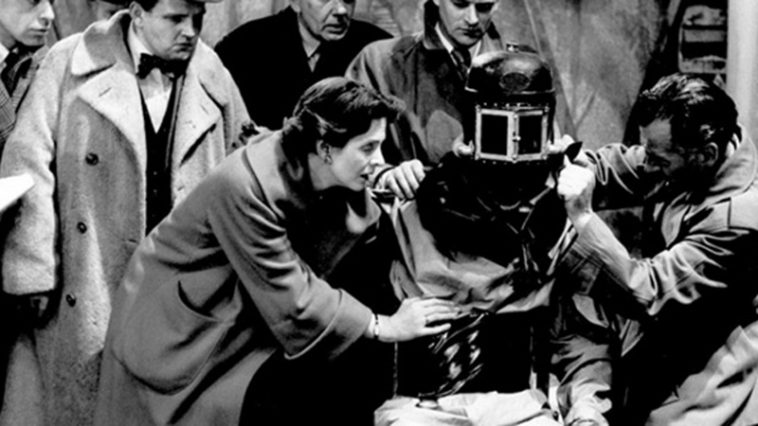Di questa pietra miliare della storia della televisione, costituita in origine da sei parti, sopravvivono oggi solo i primi due episodi, registrazioni di non ottima qualità delle puntate in diretta. The Quatermass Experiment è la prima serie di fantascienza mirata ad un pubblico adulto, nonchè il primo lavoro di Nigel Kneale, allora scrittore alla BBC, che l’aveva ideata come critica al rudimentale cinema fantascientifico americano allora in ascesa. La diretta dagli studi Alexandra Palace della BBC rendeva problematica la realizzazione degli effetti speciali, pertanto sostituiti dalla forte narrazione e dalla caratterizzazione. Solo uno dei tre membri dell’equipaggio della navicella spaziale progettata dal Professor Quatermass si salva dall’atterraggio di fortuna effettuato a Londra. Infettato da una forma di vita aliena, questi si trasforma in una creatura gigantesca costretta a nutrirsi di altre forme di vita umane, tra le quali anche gli altri membri dell’ equipaggio. Nonostante gli effetti speciali a dir poco grossolani, la serie riscosse un tale successo da essere seguita da due sequel, prodotti dalla BBC negli anni cinquanta, più precisamente “Quatermass II” del 1955 e “Quatermass and the Pit” del 1958-59.
Only the first and second episodes (from an original six) survive of this television milestone, the first science fiction series aimed specifically at an adult audience. it was also the first work by Nigel Kneale (who was then working as a staff writer at the BBC), who wrote it as a critique of what he saw as the crude, unimaginative American science fiction cinema that was then in the ascendant. Transmitted live from the BBC’s alexandra Palace studios, the nature of the medium made special effects problematic, hence the concentration on a strong narrative and characterisations. An experimental three-man space ship designed by Professor Quatermass crash lands in London with only one survivor on board. Having been infected with an alien life-form the sole survivor has already absorbed the other crew members and then proceeds to mutate into a giant creature as it absorbs further human victims (effects were obviously necessary in this latter section of the series, which were by all accounts crude to say the least). Successful with viewers beyond all expectations, two sequels were produced by the BBC in the 1950s, “Quatermass Ii” (1955) and “Quatermass and the Pit” (1958-59). As it was live television, the two surviving episodes survive as telerecordings, which are not of the highest quality.






